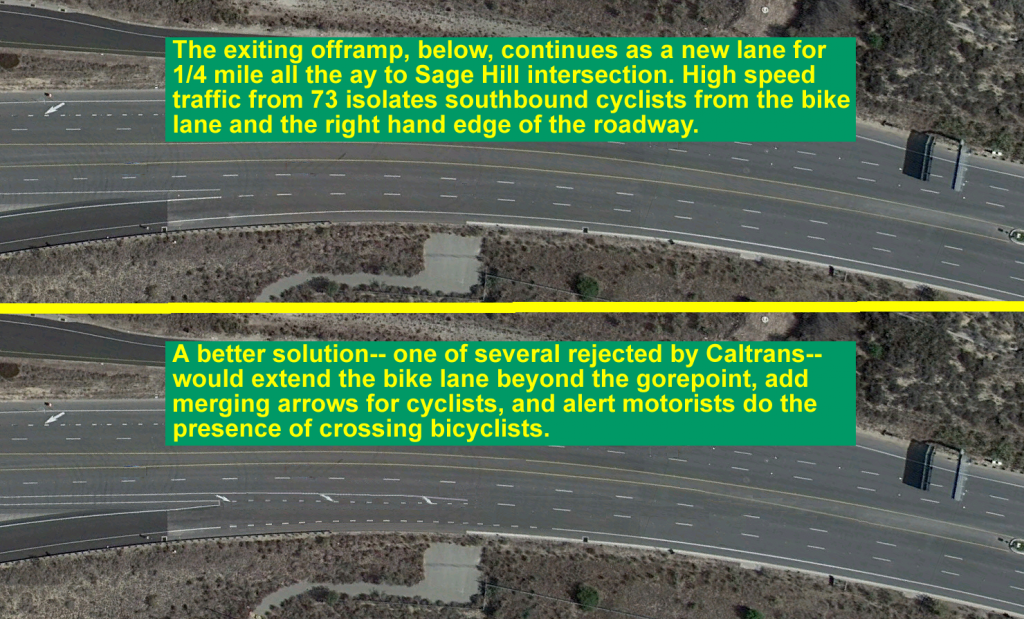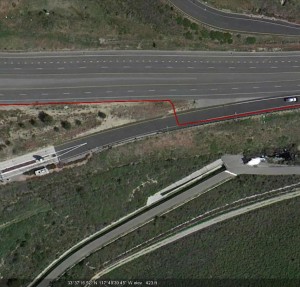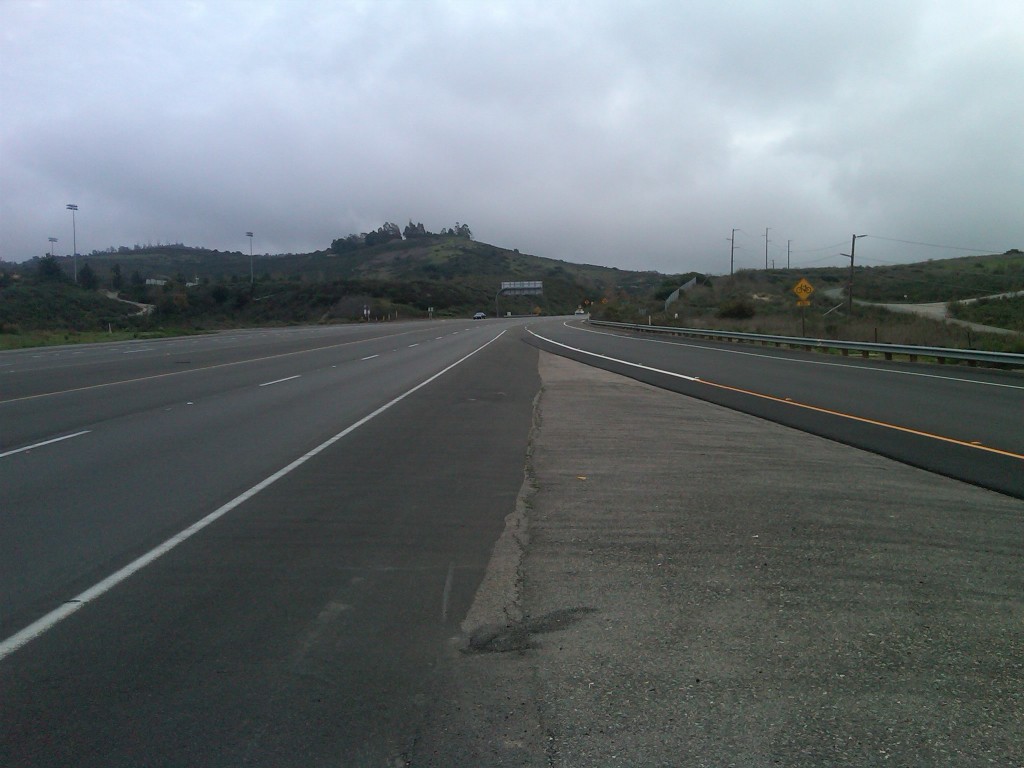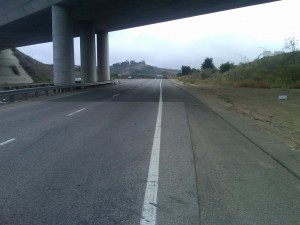Newport Coast / 73 — do you ride this?
Cause of the problem, however, persists. And the solution looks amazingly like what we proposed, below.
Transportation Corridor Agency and Caltrans engineers habitually focus only on moving automobile traffic— the more traffic, the faster, the better. That’s fine for freeways. But when that mentality creeps onto surface streets every taxpayer not in a car is at risk.
Newport Coast is a surface street. It connects schools, churches, and shopping with residential neighborhoods. When traffic from the 73 exits the toll road engineers should caution drivers to slow down, watch for and accommodate non-motorized taxpayers on the roadway. Not only did engineers not slow down those drivers, they gave them their own high-speed lane to the right of southbound through traffic, which includes bicyclists.
Most of TCA’s interchanges are bad, this one’s terrible. The Irvine bike lane fizzles out at the gore point. No signs warn motorists before the gore point of crossing bicycle traffic. And high-speed cars separate bicyclists from the right hand edge of the roadway all the way to the next intersection, Sage Hill. Click photo at left for PowerPoint tour.
Good solutions do exist
Visibility is the most important safety element. The longer bicyclists are visible the safer they are. And short of complete re-design acceptable retro-fits include 1.) Bike Xing signs in advance of the toll plaza; 2.) surface street speed limit signs on the off-ramp, 3.) a clearly marked bicycle/ car weaving zone beyond the gore point, keeping bicyclists visible to motorists longer and discouraging rapid weaving maneuvers, 4.) discouraging weaving between the gore point and Sage Hill by extending the bike lane to the left of the “new” right hand lane toll road users occupy.
 Newport seems enlightened. We await similar epiphany by Caltrans
Newport seems enlightened. We await similar epiphany by Caltrans
Motorheaded solutions always put the onus on the bicyclists with the ultimate goal of keeping them from inconveniencing the motorist.
The solution Caltrans engineers prefer makes cyclists turn sharply right and stop at a Stop sign for a break in the two lanes of cars exiting the toll plaza. Realistically, many uphill cyclists will not stop at the Stop sign. Judging two lanes of 70mph traffic is difficult and groups of riders will string out across the off-ramp.
edited by Sprocket


